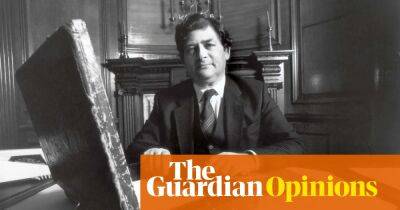‘I faked it at the beginning!’: David Chipperfield on his rise from shop designer to starchitect
S ometimes, it takes a trip abroad to make you realise what you have at home. When David Cameron visited German chancellor Angela Merkel in 2013, she introduced the then British PM to “one of our most famous German architects”. The designer in question? The London-born and -based Sir David Chipperfield, who had built several museums in Germany, as well as law courts in Barcelona and a library in Des Moines, Iowa, all while being relatively overlooked in his native Britain.
Ten years on, Chipperfield has just been announced as the winner of the 2023 Pritzker prize, architecture’s highest international accolade. And he has become a bit better known back home. “It’s a great honour,” he says, speaking from his second home in Galicia, northwest Spain, where he spent much of the pandemic. “And also a slight relief.”
Although Chipperfield is firmly part of the architectural establishment, having won countless international competitions, curated the Venice Biennale and been awarded the Riba gold medal, he has always felt like an outsider. “As a young architect in England in the 1980s, you had no chance,” he says. “We had Margaret Thatcher and Prince Charles, the twin towers of negativity towards the architectural profession. I did my first three buildings in Japan, followed by competitions in Italy and Germany. To be honest, it hasn’t really changed. I’ve been on the road ever since.”
While recent decades have seen globe-trotting celebrity “starchitects” competing with ever more novel forms and contorted structural gymnastics, Chipperfield has been a voice of sobriety. While others conjured flashy icons, he pursued an austere form of modernism exuding solemn gravitas. As the Pritzker citation puts it, his buildings are “always
Read more on theguardian.com









![Do Kwon - Terra LUNA Classic [LUNC] Price Prediction 2025-2030: More losses coming? - ambcrypto.com - Compilation - Montenegro](https://finance-news.co/storage/thumbs_400/img/2023/4/5/63048_5ui.jpg)













